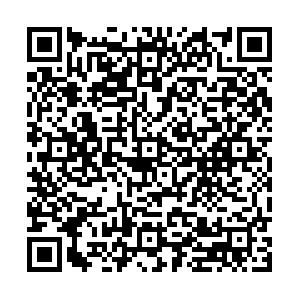Clinical features and prognosis of AIDS complicated by drug-induced liver injury: an analysis of 119 cases
-
摘要:
目的探讨AIDS患者发生药物性肝损伤(DILI)的临床特点及预后。方法收集2014年1月-2015年12月在上海市公共卫生临床中心感染一科确诊为AIDS并符合DILI诊断的患者119例。分析患者用药情况、CD4+T淋巴细胞计数、临床表现、肝脏生化指标、治疗方法、肝损伤持续时间及预后,并对患者DILI进行分型及分级,观察不同药物导致的DILI对肝生化指标的影响。计量资料2组间比较采用Wilcoxon秩和检验,多组间比较采用Kruskal-Wallis H检验;计数资料组间比较采用χ2检验。结果 58例已接受高效抗逆转录病毒治疗患者的肝损伤分级(χ2=15.756,P<0.001)、TBil水平(Z=-3.466,P=0.010)及Alb水平(Z=-1.968,P=0.049)明显高于61例未接受高效抗逆转录病毒治疗的患者;已明确导致患者DILI的药物种类中8例为抗真菌药物、41例为抗细菌药物、18例为抗结核药物、24例为抗病毒药物,抗结核药物较其他3种药物所致DILI患者的TBil水平更高(H=12.804,P=0....
-
关键词:
- 获得性免疫缺陷综合征 /
- 药物性肝损伤 /
- 预后
Abstract:Objective To investigate the clinical features and prognosis of AIDS patients complicated by drug-induced liver injury ( DILI) . Methods A total of 119 patients who were diagnosed with AIDS in First Department of Infectious Diseases in Shanghai Public Health Clinical Center from January 2014 to December 2015 and met the diagnostic criteria for DILI were enrolled. The clinical data including medications, CD4~+T lymphocyte count, clinical manifestations, liver biochemical parameters, therapies, duration of liver injury, and prognosis were analyzed, and DILI type and classification were determined for all patients. The influence of DILI caused by different drugs on liver biochemical parameters was analyzed. The Wilcoxon rank sum test was used for comparison of continuous data between two groups and the Kruskal-Wallis H test was used for comparison between multiple groups; the chi-square test was used for comparison of categorical data between groups. Results The 58 patients who received highly active antiretroviral treatment ( HAART) had significantly higher grade of liver injury ( χ2= 15. 756, P < 0. 001) and levels of total bilirubin ( TBil) ( Z =-3. 466, P = 0. 010) and albumin ( Alb) ( Z =-1. 968, P = 0. 049) than the 61 patients who did not. Among the patients who had a clear cause of DILI, 8 had DILI caused by antifungal drugs, 41 had DILI caused by antibacterial drugs, 18 had DILI caused by antitubercular agents, and 24 had DILI caused by antiviral drugs; the patients with DILI caused by antitubercular agents had a significantly higher level of TBil than those with DILI caused by other three types of drugs ( H = 12. 804, P = 0. 005) , the patients with DILI caused by antibacterial drugs and antitubercular agents had a significantly lower level of Alb than those with DILI caused by the other two types of drugs ( H = 14. 236, P = 0. 003) , and the patients with DILI caused by antitubercular agents and antiviral drugs had a significantly higher grade of liver injury than those with DILI caused by the other two types of drugs ( χ2= 16. 373, P = 0. 008) . The hepatocellular injury-type patients had a shorter length of hospital stay ( χ2= 8. 046, P = 0. 045) .A high level of alkaline phosphatase and a low level of alanine aminotransferase indicated a longer length of hospital stay ( Z =-2. 943 and-2. 592, both P < 0. 05) . Conclusion AIDS patients are given various drugs and have a high incidence rate of DILI. HARRT can aggravate liver injury, but it does not significantly affect patients' prognosis. Liver function examination should be performed regularly during clinical medication to know the state of liver inflammation and reduce the incidence rate of DILI in AIDS patients.
-
Key words:
- acquired immunodeficiency syndrome /
- drug-induced liver injury /
- prognosis
-
[1]Drug-induced liver Disease Study Group, Chinese Society of Hepatology, Chinese Medical Association.Guidelines for the management of drug-induced liver injury[J].J Clin Hepatol, 2015, 31 (11) :1752-1769. (in Chinese) 中华医学会肝病学分会药物性肝病学组.药物性肝损伤诊治指南[J].临床肝胆病杂志, 2015, 31 (11) :1752-1769. [2]KONTORINIS N, TERICH DT.Toxicity of non-nucleoside analogue reverse transcriptase inhibitors[J].Semin Liver Dis, 2003, 23 (2) :173-182. [3]RODRIGUEZ-ROSADO R, GARCIA-SAMANIEGO J, SORIANO V.Hepatotoxicity after introduction of highly active antiretroviral therapy[J].AIDS, 1998, 12 (10) :1256. [4]CHALASANI NP, HAYASHI PH, BONKOVSKY HL, et al.ACG Clinical Guideline:the diagnosis and management of idiosyncratic drug-induced liver injury[J].Am J Gastroenterol, 2014, 109 (7) :950-966. [5]YIMER G, UEDA N, HABTEWOLD A, et al.Pharmacogenetic&pharmacokinetic biomarker for efavirenz based ARV and rifampicin based anti-TB drug induced liver injury in TB-HIV infected patients[J].PLo S One, 2011, 6 (12) :e27810. [6]JONES M, NUNEZ M.Liver toxicity of antiretroviral drugs[J].Semin Liver Dis, 2012, 32 (2) :167-176. [7]BJORNSSON ES, BERGMANN OM, BJORNSSON HK, et al.Incidence, presentation, and outcomes in patients with drug-induced liver injury in the general population of Iceland[J].Gastroenterology, 2013, 144 (7) :1419-1425. [8]MUGUSI S, NGAIMISI E, JANABI M, et al.Liver enzyme abnormalities and associated risk factors in HIV patients on efavirenzbased HAART with or without tuberculosis co-infection in Tanzania[J].PLo S One, 2012, 7 (7) :e40180. [9]WANG YL, QI YW, BAI JS, et al.Clinical analysis of drug induced liver disease in AIDS/HIV patients[J].J Kunming Med Coll, 2009, 30 (3) :129-132. (in Chinese) 汪亚玲, 祁燕伟, 白劲松, 等.AIDS/HIV药物性肝损伤的临床分析[J].昆明医学院学报, 2009, 30 (3) :129-132. [10]FERNANDEZ-VILLAR A, SOPENA B, VAZQUEZ R, et al.Isoniazid hepatotoxicity among drug users:the role of hepatitis C[J].Clin Infect Dis, 2003, 36 (3) :293-298. [11]COFFIE PA, TONWE-GOLD B, TANON AK, et al.Incidence and risk factors of severe adverse events with nevirapine-based antiretroviral therapy in HIV-infected women.MTCT-Plus program, Abidjan, C8te d'Ivoire[J].BMC Infect Dis, 2010, 10:188. [12]SCHUTZ C, ISMAIL Z, PROXENOS CJ, et al.Burden of antituberculosis and antiretroviral drug-induced liver injury at a secondary hospital in South Africa[J].S Afr Med J, 2012, 102 (6) :506-511. [13]TREEPRASERTSUK S, HUNTRAKUL J, RIDTITID W, et al.The predictors of complications in patients with drug-induced liver injury caused by antimicrobial agents[J].Aliment Pharmacol Ther, 2010, 31 (11) :1200-1207. 期刊类型引用(13)
1. 温芳芳,张龙,王娟. 预后营养指数、血清白蛋白对肝切除术病人术后感染风险的预测价值及护理指导意义. 全科护理. 2025(02): 236-239 .  百度学术
百度学术2. 魏红艳,王远珍,常丽仙,木唤,刘春云,刘立. 原发性肝癌合并腹水患者发生SBP的风险预测分析. 昆明医科大学学报. 2024(03): 133-140 .  百度学术
百度学术3. 魏红艳,王远珍,常丽仙,木唤,刘春云,刘立. 原发性肝癌患者并发自发性腹膜炎临床诊断模型的构建和应用. 现代肿瘤医学. 2024(19): 3718-3725 .  百度学术
百度学术4. 朱明强,杨大帅,熊祥云,裴俊鹏,彭阳,丁佑铭. 肝癌肝切除术后感染风险预测模型的建立与评价. 临床肝胆病杂志. 2023(01): 110-117 .  本站查看
本站查看5. 罗清兰,邓宇伟,曾涛. 原发性肝癌术前中性粒细胞/淋巴细胞比值、血小板/淋巴细胞比值和甲胎蛋白对预后的评估分析. 当代医学. 2022(19): 18-21 .  百度学术
百度学术6. 付先锋,晏燕. 肝动脉介入栓塞治疗的肝癌患者预后与血清胆碱酯酶、钠水平的关系分析. 检验医学与临床. 2022(24): 3417-3420 .  百度学术
百度学术7. 曾桥. 腹腔镜手术治疗肝癌的分析. 当代医学. 2021(04): 96-98 .  百度学术
百度学术8. 黄旦华. 多项肿瘤标志物联合检测在肝癌中的诊断效能. 医疗装备. 2021(11): 52-53 .  百度学术
百度学术9. 袁维,孙克伟,陈斌,朱文芳,银思涵. 56例中晚期原发性肝癌死亡患者的临床分析. 中西医结合肝病杂志. 2021(08): 707-711 .  百度学术
百度学术10. 马冰,白黎,赵艳,海丹丹,李花花. 原发性肝癌TACE术后发生感染性并发症的影响因素研究. 实用癌症杂志. 2021(12): 2033-2035 .  百度学术
百度学术11. 王益卓,刘唯佳,卢兵,黄其密,唐德奉. 原发性肝癌合并肺部感染58例临床特征分析. 中华肺部疾病杂志(电子版). 2020(01): 83-84 .  百度学术
百度学术12. 刘娟. 以坚强概念为基础的心理干预对原发性肝癌合并抑郁病人症状改善、心理状态及生命质量的影响. 全科护理. 2020(28): 3834-3837 .  百度学术
百度学术13. 叶颖剑,刘波,陈伟,李琼霞. 血清AFP阴性的肝细胞癌患者预后及分期系统分析. 临床肝胆病杂志. 2019(03): 535-541 .  本站查看
本站查看其他类型引用(4)
-




 PDF下载 ( 1688 KB)
PDF下载 ( 1688 KB)

 百度学术
百度学术
 下载:
下载:

